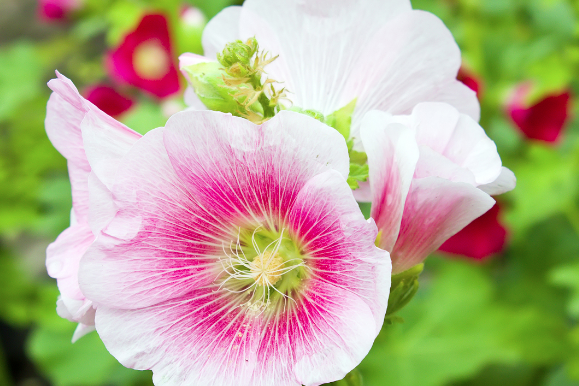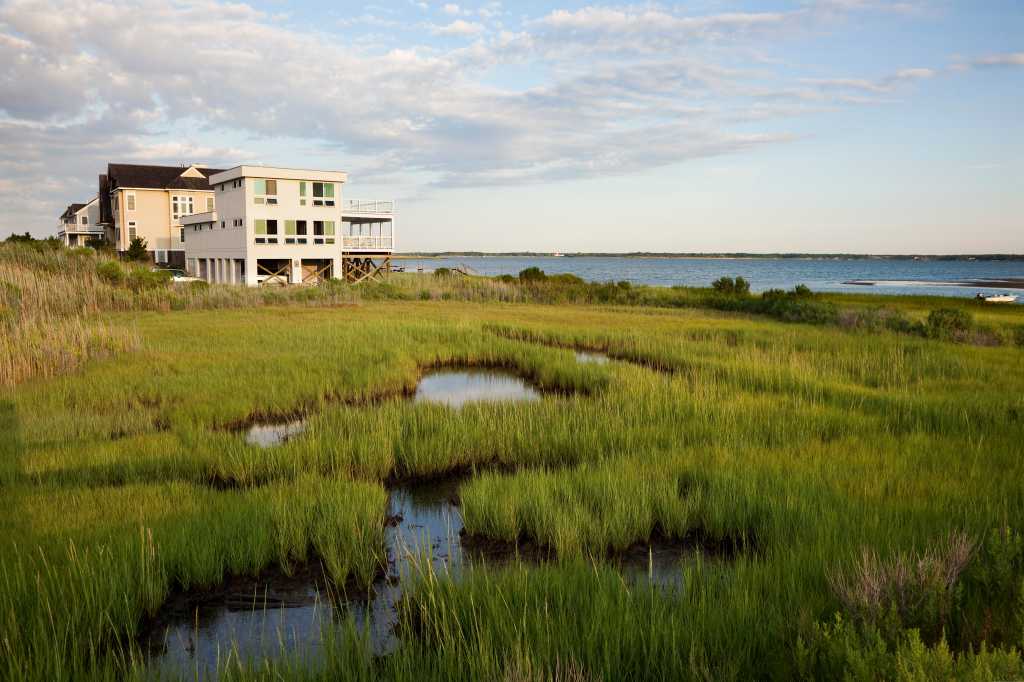Hollyhocks: A Perennial Favorite

I have been asked to plant hollyhocks in clients’ gardens more than any other plant, with the exception of roses. We think of them as the flower of our grandmother’s garden and a staple in an English-type garden or border. And if you have a spot with full sun and well-drained soil, without overhead water, they can be a charming, vertical member of the garden. Clients especially prize the double ones.
One of the gardening questions I’m asked frequently is why someone’s hollyhocks have not returned after being doing so well last year. The answer: most hollyhocks available in this area are biennials, producing one or two stalks before beginning to fade. They make leaves only the first year, after seedlings sprout and flower the second year. After flowering, they make seeds; drop them on the ground where, if we are lucky, the process begins anew.
There are also perennial types; perennial described in the case of hollyhocks as about five years. They seem to be mainly of the Alcea ficafolia (fig-leafed) type, although there are some Alcea rosea types also. When I began at one of the gardens where I work, there were some Russian hollyhocks in the garden—a soft yellow ficafolia. They grew there for the seven years I worked in that garden and now that I have gone back to it after two years absence, they are still there. The plants got larger each year, producing more stalks of flowers annually and also self-seeded, allowing me to choose spots for new plants. One season, I transplanted some. They have long roots, almost like a taproot, and did not withstand my transplanting.
Hollyhocks are susceptible to rust, turning the bottom leaves an unattractive spotted yellow. Supposedly, this can be minimized by avoiding overhead watering, which limits water. (Hollyhocks are drought-tolerant.) You can eliminate diseased foliage with a very through fall cleanup of stalks and foliage, though this has never worked for me. I remove the ugly foliage. If the plant is alone, perhaps standing beside a path, it’s so striking the bare stems are insignificant and if the plant is in the garden one does not see them. This rust is specific to hollyhocks and does not affect other plants.
Hollyhocks are an ancient plant. Seeds have been found in 50,000-year-old Neanderthal graves and supposedly a potion of hazel buds, wild thyme hollyhocks and marigolds will let you to see fairies!
I’ve purchased perennial types from Annie’s Annuals in California. There’s a black one and a scarlet red one, both of which I must try. I have an Aunt Brownie Fig that’s soft pink to crimson in the center. And there are others available of mixed colors. The plants are expensive since they come from California (the shipping is as much as the plant) but they are worth a try.
Hollyhocks are blooming now, as is one my favorite flowers for the cutting garden: dahlias. The flowers arrived in Europe in the 18th century, brought by the Spanish from Mexico (where they are indigenous). They have been bred so that now there are 14 types, categorized by flower shape from bedding types at 6” to dinner plates growing to 5’-6’ depending on the variety. The flowers range from round ball shapes to multi-pedaled types of many shapes to huge dinner plates, which can be as large as 11”!
I have grown every variety from tubers purchased online. This has been very successful. Starting conditions are very specific and growing instructions come with the tubers. The taller ones MUST be staked—I have learned the hard way! This year, I planted some inside a group of three tomato cages tied together to make a large cage. The plant will make new canes throughout its season and will flower until frost. They are a spectacular member of the garden at this time of year. It’s possible to keep the tubers through the winter, but I don’t have the necessary conditions, so I buy new ones each year. They are at the garden centers now. Why not try some?
Jeanelle Myers is a professional gardener, landscaper and consultant. For gardening discussion you can call her at 631-434-5067.









